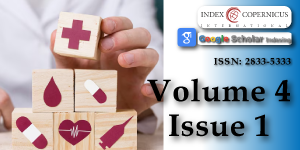Community, health and rehabilitation
Main Article Content
Abstract
The problems of guaranteeing the best possible social and health services in every part of the world to combat any form of disability and limitation of participation for all, as indicated by international ethical-political documents, are still very great. A critical point that could favour this progress is to enhance the integration between the growing potential of rehabilitation science (medical and clinical evidence, technologies, and training of numerous operators..) and the ability of communities as a whole to stimulate, support and qualify these interventions with the participation of citizens (families, neighbours and associations) who can voluntarily actively carry out important synergistic actions in many fields. This could develop in any socio-economic condition; in developed ones supporting and finalizing any treatment in common life and in developing countries offering competencies and knowledge to the strong funding actions of community projects aimed at populations with disabilities in this part of the World. The community of rehabilitation professionals, national governments and rulers, and international institutions (UN, WHO..) must well understand this aspect and make it their own in training, in the definition of care protocols, in the definition of the organization of socio-health and rehabilitation systems in each country in relation to the different local economic and cultural conditions.
Article Details
Copyright (c) 2023 Giustini A.

This work is licensed under a Creative Commons Attribution 4.0 International License.
Pan American Health Organization / World Health Organization, United States Agency for International Development. Analysis of the health sector. A tool to make policy formulation viable. Methodological guidelines. 2006.
Cieza A. Rehabilitation the Health Strategy of the 21st Century, Really? Arch Phys Med Rehabil. 2019 Nov;100(11):2212-2214. doi: 10.1016/j.apmr.2019.05.019. Epub 2019 May 22. PMID: 31128114.
Giustini A, Von Groote PM, Christodoulou N, Michail X, Vanderstraeten G. Disability and human rights: the World Report on Disability as a unique opportunity to review and enrich European health policy. Eur J Phys Rehabil Med. 2012 Jun;48(2):179-88. Epub 2012 Apr 17. PMID: 22510679.
Jolley E, Lynch P, Virendrakumar B, Rowe S, Schmidt E. Education and social inclusion of people with disabilities in five countries in West Africa: a literature review. Disabil Rehabil. 2018 Nov;40(22):2704-2712. doi: 10.1080/09638288.2017.1353649. Epub 2017 Jul 14. PMID: 28705016.
Howard-Wilsher S, Irvine L, Fan H, Shakespeare T, Suhrcke M, Horton S, Poland F, Hooper L, Song F. Systematic overview of economic evaluations of health-related rehabilitation. Disabil Health J. 2016 Jan;9(1):11-25. doi: 10.1016/j.dhjo.2015.08.009. Epub 2015 Sep 14. PMID: 26440556.
Krug E, Cieza A. Strengthening health systems to provide rehabilitation services. Bull World Health Organ. 2017 Mar 1;95(3):167. doi: 10.2471/BLT.17.191809. PMID: 28250526; PMCID: PMC5328120.
Stucki G, Bickenbach J. Functioning: the third health indicator in the health system and the key indicator for rehabilitation. Eur J Phys Rehabil Med. 2017 Feb;53(1):134-138. doi: 10.23736/S1973-9087.17.04565-8. Epub 2017 Jan 24. PMID: 28118696.
WHO. Rehabilitation in Health Systems. 2018.
WHO and Institute for Health Metrics and Evaluation. Global estimates of the need for rehabilitation based on the Global Burden of Disease study 2019. 2020.
WHO. Rehabilitation 2030 call for Action. 2017.
WHO. Rehabilitation in Health Systems. 2018.

